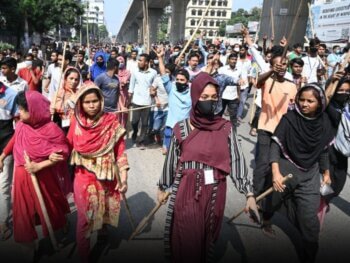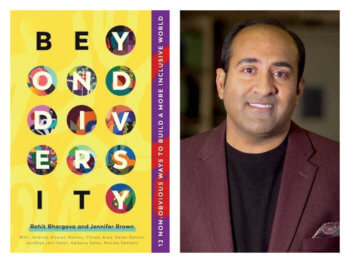We continue our holiday series: Our #ICYMI Stories Of 2020. We take a look at how the COVID-19 economic fallout has hit women especially hard.
The economic downturn propelled by COVID-19 is creating a dire situation for women across the world. Not only is gender inequality still happening at home, the global economic shutdown has created a “Shecession” where women are being pushed out of their careers either through the downsizing or having to leave work in order to take care of the family.
Have you heard of the ‘double day?’
For those of you who haven’t, truth be told, I’m concerned. But, that’s a conversation for another day.
The “double day” typically refers to when working women finish their day jobs and then go home to carry out their ‘second shift,’ which includes managing the household, cooking, cleaning, and taking care of the child(ren) or older relatives. These tasks tend to fall on a woman’s plate as their partner or spouse is too busy with work or, according to Handbags In The Boardroom, are said to be “hopeless around the home.”
Now, I promise, I am not here on a man-bashing rant, so stick with me.
When the COVID-19 pandemic hit, unprecedented measures were taken when countries across the world essentially shut its proverbial doors. As a result, while many businesses and people were impacted — parents in particular —were left scrambling. Overnight, parents were asked to carry out their everyday work duties from home (if possible), to step into the role of an educator for their children, while still doing their everyday duties around the home. That’s not even taking into consideration the panic that COVID-19 had instilled among the public.
No big deal.
Am I right?
Wrong.
It was an incredible amount of stress to take on, especially for moms across the world.
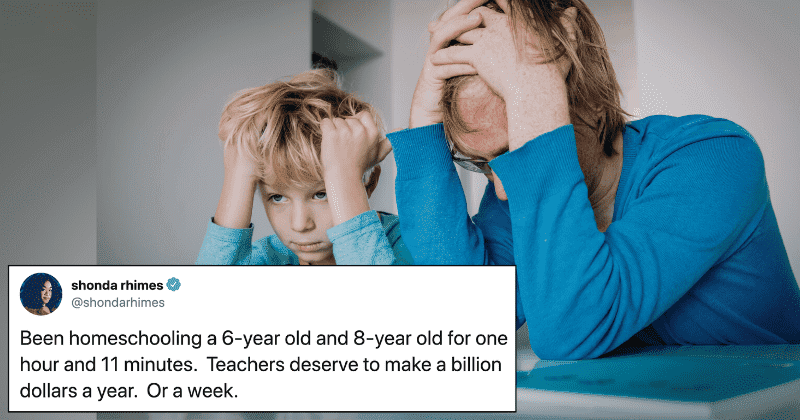
Let’s Look At the Bigger Picture: The “Shecession”
We know that moms typically have to take on the brunt of the work at home, but the COVID-19 lockdown has amplified the amount of work they’ve had to take on within the household.

But that’s not all.
According to Bluenotes, the Institute of Women’s Policy Research (IWPR) has declared that the COVID-19 crisis contributed to a “Shecession” across the world as mainly women have lost their jobs.
Chatelaine notes that “women represent more than half of workers with children who lost their jobs between February and April” in Canada. For example, CBC reported that while “1.5 million Canadian women lost their jobs in the first two months of the pandemic. Women [also] accounted for about 45 % of the decline in hours worked over the downturn, but will only make up 35% of the recovery.” In fact, Chatelaine highlights that the hardest-hit cohort throughout the pandemic has been single mothers. The kicker is that while economies open back up, many women who have children are having to make the decision to take either a reduction in hours or stop working altogether to take on childcare duties.
The lack of child care and the threat of it continuing has mothers rethinking whether they can still have a career. But, it shouldn’t be mothers alone who are taking it upon themselves to make sacrifices. I’m no expert, but I imagine this would lead to resentment between spouses or co-parents. Instead, fathers need to be part of that conversation to make a fair decision and find a work-life balance that works for both parents. As well, fathers need to be advocating alongside mothers in the fight for a reformation of “…the way education and childcare services are both funded and delivered,” notes Chatelaine.
Meanwhile, StatCan highlights that “in all age groups, men are close to pre-shutdown employment levels than women, [with] employment among men [having] recovered to 92.3% of its February level.” In addition, CBC explains that “one-third of women who lost jobs between February and June did not seek work, putting them at higher risk of long term job-separation and future wage penalties.”
Things are not much better in the United States as unemployment among women continues to rise. For instance, in the United States, as of June, Statista reported that “the unadjusted unemployment rate of women in the United States stood at 12 percent,” whereas Statista noted that 10.6% of males were unemployed.
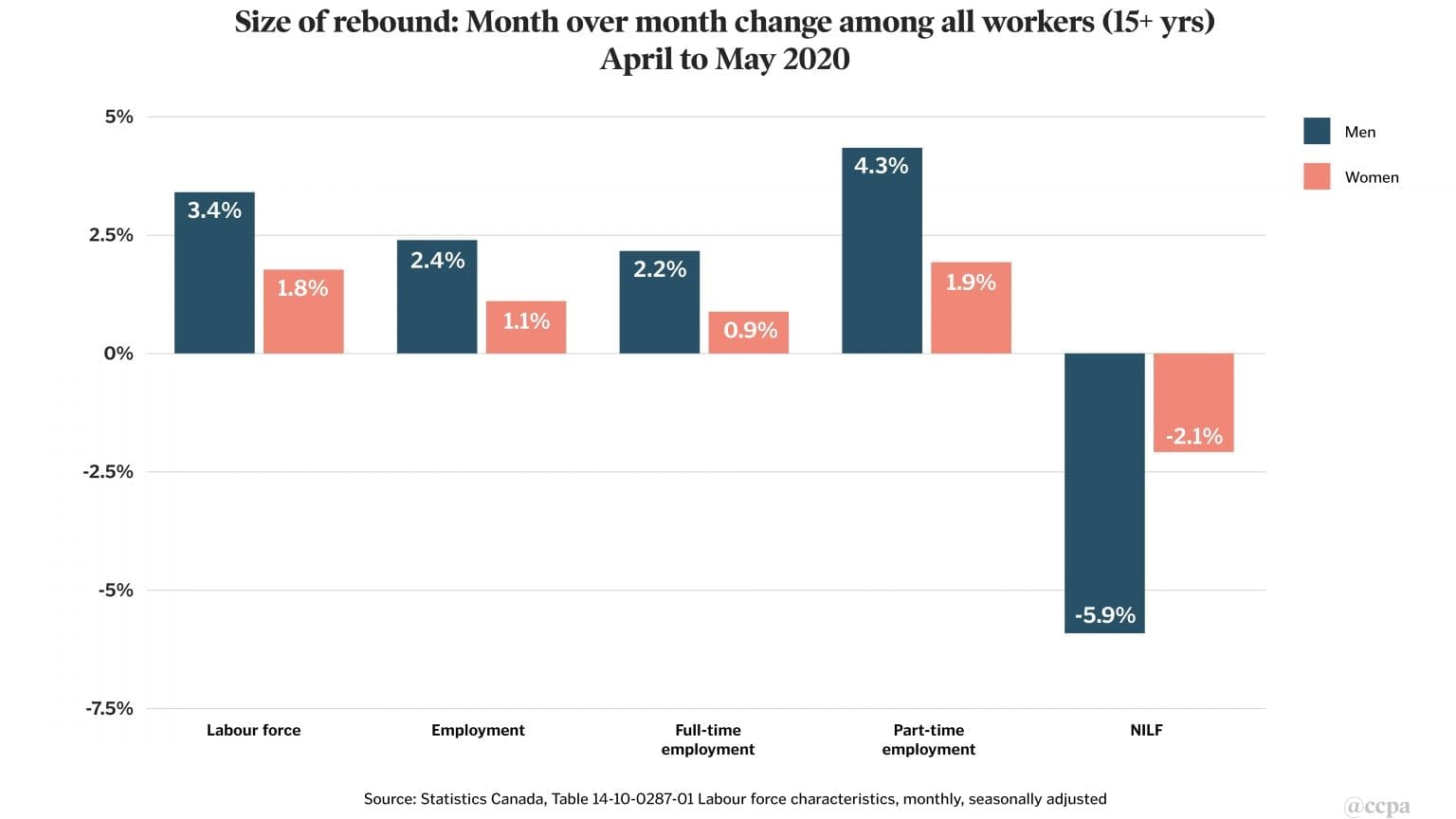
What Makes The Indian “Shecession” Worse?
It’s not only women in North America who are facing this struggle.
In India, while there is less documentation on the exact unemployment rate between women and men, Bluenotes reports that “job losses for women have been more pronounced than for men. Women’s employment is also concentrated in pandemic-impacted sectors, particularly service activities such as hospitality and education.”
Currently, female workers in India account for 20.5 % of the workforce, explains Bluenotes. To add to this, today, Indian women are already disadvantaged by the gender wage gap. For instance, Bluenotes reports that “women receive only 66 per cent of what men receive for doing the same job. The gap ranges from 22 per cent to 39 per cent, depending on whether the role is in an urban or a rural location and whether it is regular or casual.”
Similar to North America, due to the pandemic, Indian women have been relegated to the household to take care of their children, older family members, and the chores. According to Bluenotes, the numbers paint a stark picture: “The Organization for Economic Co-operation and Development (OECD) estimates that, in India, for every 36 minutes of unpaid care work a man does, a woman will do more than six hours. This is the highest gender disparity in the OECD’s 33 economies.”
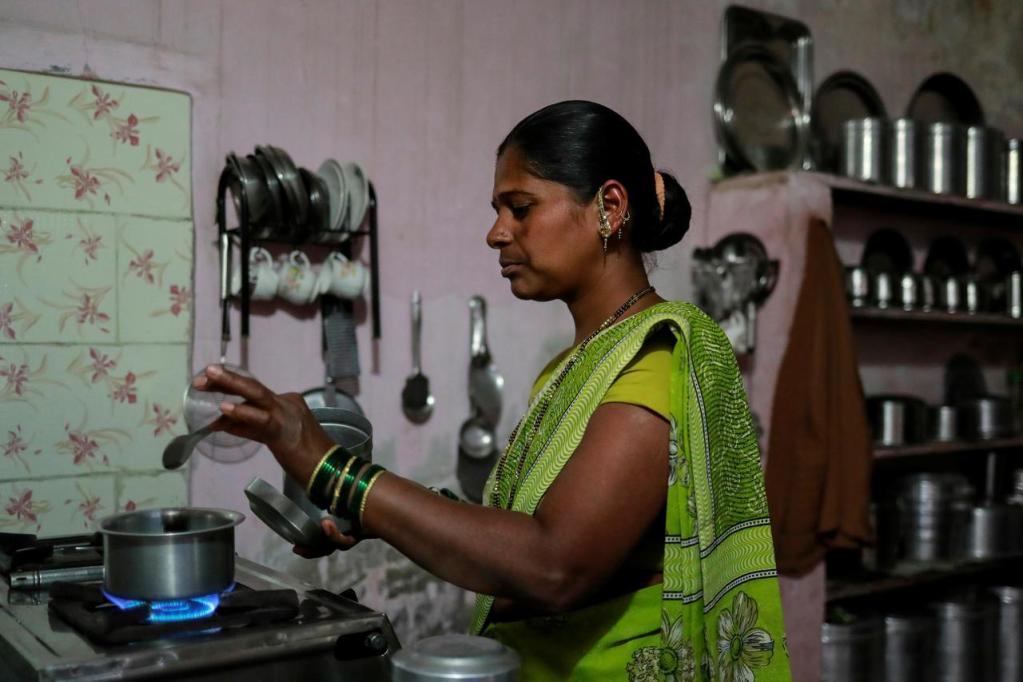
The opportunities for Indian women to re-enter the workforce are limited due to the lack of demand, along with the rising need to keep females in the household to carry out their ‘gender-specific duties’ (don’t even get me started). This brings forth the concern that once life returns to a ‘new normal,’ women will have even fewer opportunities to enter the workforce and will be limited to even lower-paying work, which will be detrimental to their ability to broaden the scope of their lives.
Why Are These Gender Biases Still Happening?
Statistics aside, for the women who continue to work, they have also had to take on the additional responsibilities that have come along with the pandemic. The best way to describe it would be to say it’s the double shift on steroids.
For instance, many of the moms that I work with were beside themselves with stress during the remainder of the school year as they had to navigate their children’s schoolwork and attitudes, while still doing their jobs, stopping to fix meals. Notice I didn’t mention these mama’s making any time for themselves?
Ain’t nobody got time for that when your life centres around everyone else’s needs in your household!
Instead, moms are too busy being wracked with guilt as they fall behind on their work and they feel like failures as mothers for not being able to spend enough time with their kids. As well, a few friends have expressed to me that if schools don’t reopen, they’d have to consider taking a leave of absence or quitting their jobs because they just cannot do everything.
While women are stereotyped as being the more nurturing sex, that’s no excuse for men not to shoulder some of the work. And besides, if it takes two, why should only one person be left to nurture their
Why are more dads not offering to give up their careers because they’re supposed to be the breadwinner? Why should women have to do everything in the household? And, most importantly, why should the woman take it upon herself to give up on or put their careers on pause?
These thoughts shine a light on the patriarchal underpinnings that still govern the way we, perhaps unconsciously, think about the concept of “marriage and family,” explains Chatelaine. What’s unfortunate is that these patriarchal ideas result in a woman’s career and aspirations being easier to undervalue and cast aside, in comparison to a man.
It’s 2020 for goodness sake, it’s high time for these outdated ideologies to get kicked to the curb.
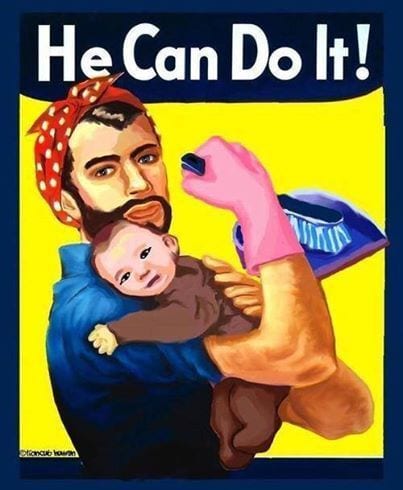
Where Do We Go From Here?
Men need to recognize that although their partners or co-parent may be stepping up to the plate and getting things done, they too need to contribute to taking care of their child(ren) and responsibilities within the household. Yes, I mean more than just financially.
Regardless of the fact that men often get paid more than their female counterparts, this does not mean that women’s work is less meaningful and should be cast aside.
Instead, according to Chatelaine, men need to join the call for additional accommodations or flexible work arrangements, so that they can strengthen the initiative and so that they too can share some of the burdens of the ‘double shift.’
Main Image Photo Credit: www.rd.com
Devika Goberdhan | Features Editor - Fashion
Author
Devika (@goberdhan.devika) is an MA graduate who specialized in Political Science at York University. Her passion and research throughout her graduate studies pushed her to learn about and unpack hot button issues. Thus, since starting at ANOKHI in 2016, she has written extensively about many challe...
















































































